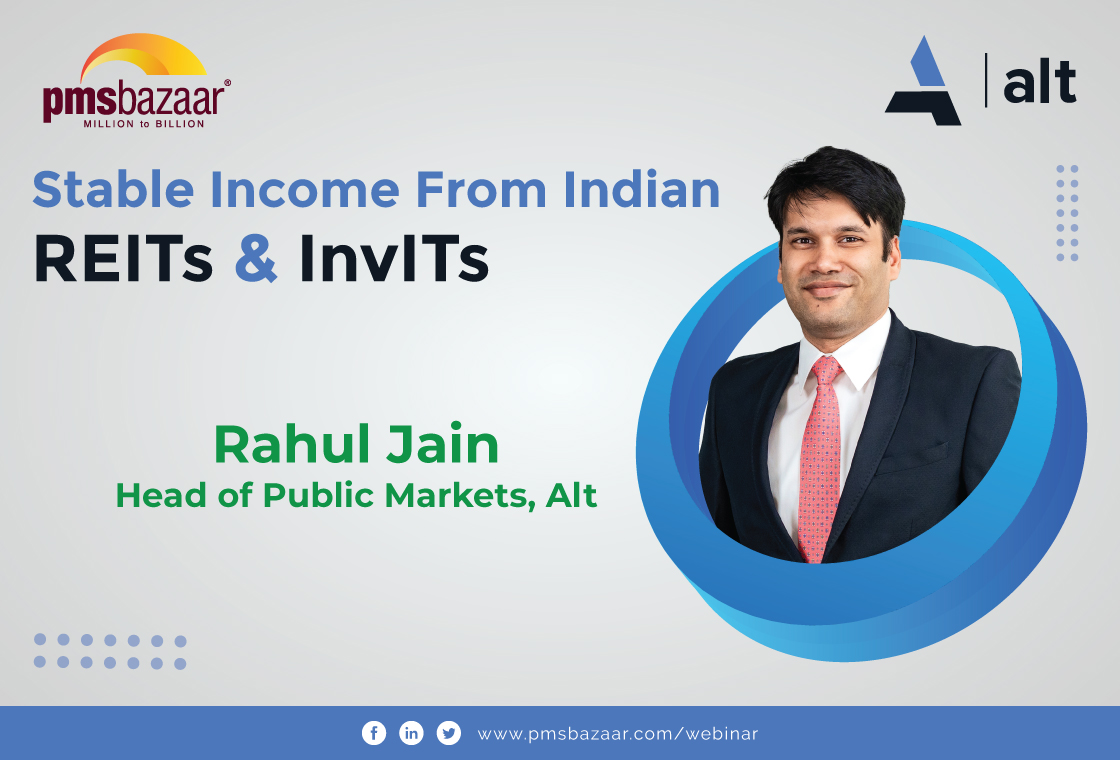In an exclusive knowledge webinar with PMS Bazaar, CFA Society India's Sanjay Parikh and Piyush R Singh take portfolio managers through the latest norms in performance reporting and highlight new requirements in the Regulations

The multi-billion dollar PMS industry in India has seen a major change in regulations roughly once in 10 years. While the previous changes impacted ticket size, capital adequacy norms etc., the latest SEBI PMS Regulations 2020 have far-reaching implications since they transform the PMS portfolio performance reporting landscape in a big way.PMS performance reporting was due for a review mainly due to lack of uniformity in reporting standards. But, that's all set to change from October this year as the market regulator has mandated certain clear standards when it comes to investment approach, calculation methodology, performance reporting & audit etc. In an exclusive webinar with PMS Bazaar, volunteers of knowledge partner CFA Society India, Sanjay Parikh and Piyush R Singh take portfolio managers through the latest changes and answer questions. Read on to know more.
Then and Now
Many new things have been introduced in the SEBI PMS Regulations 2020.
Investment Approach - Earlier regulations had no such concept when it came to investment approach. But, SEBI has introduced it now. This requires aggregating similar portfolios according to asset class, strategy and mandate. Earlier, there was a requirement of giving a weighted average return of all the portfolios of the portfolio manager which led to improper reporting as a client looking at a particular strategy was shown the average return of all the strategies offered by the firm. Now, there must be a return calculation on an investment approach basis.
Calculation Methodology - The way returns are calculated are also being changed. Earlier it was weighted average return but now it is time weighted rate of return (TWRR). The earlier return was for portfolio manager, but now the return will be for all portfolios in an Investment Approach. TWRR is the return on say, Re 1 invested from beginning to end, assuming no subscriptions and withdrawals. This eliminates the effect of both timing and amount of money at work. "TWRR can be computed using market value or unitized method," says Piyush R Singh.
Performance Reporting - There is a slight change in performance reporting as well. Previously, this was done at firm-level. Now, in addition to firm-level, investment performance is to be reported at investment approach level too. While earlier there was this one number that was provided, now there will be different numbers as per different investment approaches.
Audit - Previously, there was no requirement of performance audit. Of course, there was a need to audit the statement that was sent to the client. "Earlier whatever was getting reported to SEBI on a monthly basis was not getting specifically audited. But now, this audit will have to be specifically performed and submitted to SEBI," says Sanjay Parikh.
Monthly reports, performance audit
The new SEBI norms mandate enhanced reporting formats. This is especially true for monthly reports submitted to SEBI.
For example, Annexure A previously contained the performance of the portfolio manager during the month on a weighted average basis for all clients. In the new format for discretionary PMS, benchmark data has to be given (in total return form), along with investment approach numbers for 1 month, 1 year, AUM, and portfolio turnover ratio for 1 month and 1 year. In non-discretionary PMS, all the portfolios have to be clubbed together for a number each for 1 month and 1 year returns and portfolio turnover ratio for 1 month and 1 year.
In Annexure B too, there are changes. Erstwhile there was no specific format for this. But now, performance report for client portfolio and investment approach separately need to be given for 1 year, 3 years, 5 years, 10 years and since inception time periods, along with benchmark performance.
The performance audit is a step towards enhanced governance. The scope of the audit, as per February 2020 SEBI circular, includes returns should be inclusive of returns on cash and cash equivalents, returns should be net of fee and expenses, changes to investment approaches must be disclosed in marketing documents, performance for one investment approach should be same in all reporting etc.
"The frequency of audit will be yearly, within 60 days of the financial year end. This has to be performed by a qualified auditor i.e. a practicing CA firm," says Sanjay Parikh and Piyush R Singh
The CFA Institute Global Investment Performance Standards (GIPS®) are globally accepted standards considered industry best practice for investment performance reporting and presentation. Adopted by hundreds of organizations around the world, the GIPS standards have been implemented by most of the top asset management firms.
By establishing requirements for consistent and transparent reporting, the GIPS standards empower investors to compare the past performance of asset managers. All but one of the top 25 global investment managers claims compliance with the GIPS standards. "These are voluntary standards governing the calculation and presentation of investment performance based on the ethical principles of fair representation and disclosure," the experts said.
GIPS came about due to lack of reporting consistency in portfolio performance, cherry picking of portfolios, representative portfolio and survivorship bias. With GIPS, industry has a 'passport' to market their products globally. The GIPS, in comparison with SEBI norms, differs in certain aspects related to discretion, return computation methods, performance history, benchmark, terminated accounts, switching of accounts between composites, policy & procedures, risk measures and books & records. GIPS has elaborate guidance on many issues that Firms face while computing and presenting investment performance. Firms can refer to GIPS for an answer if they are faced with issues while complying with SEBI PMS Regulations.
The CFA Society India volunteers also addressed queries coming from portfolio managers on the SEBI norms.
A: No. Since the regulations come into effect from October 2020, the sense is performance audit has to be done for FY20-21.
A: Inactive investment approach means that there are no active clients. In this case, there will be a break in the track-record of the investment approach. Thus, there will not be a CAGR for the entire time period which includes inactivity. The return will be given only for periods when there are clients.
A: Yes. Unless the time period is for a time period less than 1 year, TWRR should be annualized. Returns less than one year should not be annualized.
A: Yes, it is a possibility if one client is coming with huge cash that accounts for 70%. But usually if you are managing many portfolios, the likelihood of one portfolio skewing all the others in the same investment approach is less. Unfortunately, there is no way in SEBI norms to remove such an effect.
A: From GIPS perspective, norms mandate showing of real performance. Model portfolio performance does not pertain to any client performance, and that is the reason why the same should not be used in marketing materials.
Those who missed the opportunity to hear from the Experts directly can listen to the entire session through the appended link:
For more information, please contact info@pmsbazaar.com
Recent Blogs

Spot the Trouble: Red Flags in Equity Investment Analysis
PMS Bazaar recently organized a webinar titled “Spot the Trouble: Red Flags in Equity Investment Analysis,” which featured Mr. Arpit Shah, Co-Founder & Director, Care Portfolio Managers. This blog covers the important points shared in this insightful webinar.

Long-Only AIFs Rebound Sharply in October; Long-Short Strategies Lag Despite Lower Volatility
106 long-only AIFs averaged 3.68% vs 32 long-short AIFs at 2.7%; only 24–31% of funds beat key indices

Markets log strongest monthly gains in 7 months; PMS performance turns near-uniform in October
Nifty 50 TRI gained 4.62%, BSE 500 TRI rose 4.27%; 415 of 427 equity PMSes ended positive

How SMEs are Shaping India’s Investment Landscape?
PMS Bazaar recently organized a webinar titled “How SMEs are Shaping India’s Investment Landscape?” which featured Mr. Shrikant Goyal, Fund Manager, GetFive Opportunity Fund.

Stable Income from Indian REITs and InvITs
PMS Bazaar recently organized a webinar titled “Stable Income from Indian REITs and InvITs,” which featured Mr. Rahul Jain, Head of Public Markets, Alt.

5 Key Considerations Before Investing in AIFs in India
Alternative Investment Funds (AIFs) have emerged as a compelling option for sophisticated investors seeking diversification and potentially superior returns. But venturing into AIFs requires a clear understanding of their unique characteristics that go beyond simply knowing what they are and their categories.

How AIF can help in diversification?
Traditionally, Indian investors have relied on a mix of stocks and bonds to build their wealth. While this approach offers diversification, it can still leave your portfolio vulnerable to market fluctuations. Enter Alternative Investment Funds (AIFs), a dynamic asset class gaining traction for its ability to unlock diversification beyond the realm of conventional options.

Long-Short AIFs Outperform Again Even as Markets Rebound in September
104 long-only funds shows an average monthly gain of just 0.37 per cent, while long-short AIF category averaged 0.94 per cent

